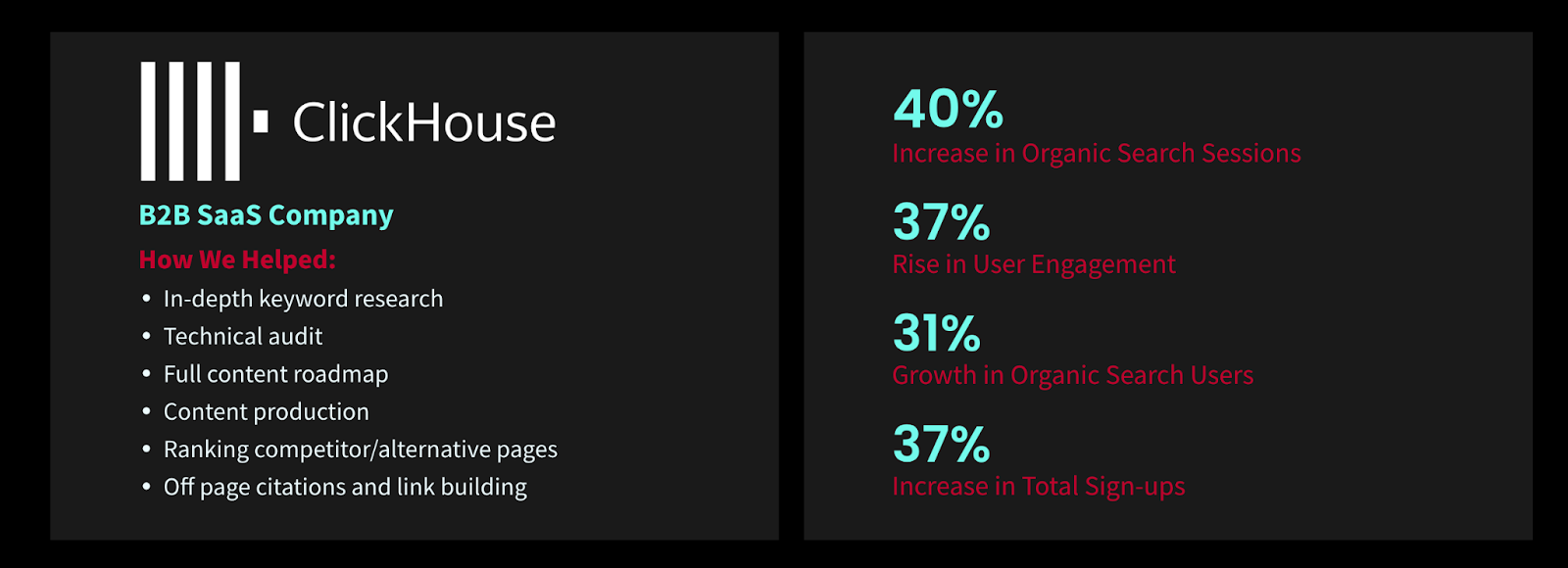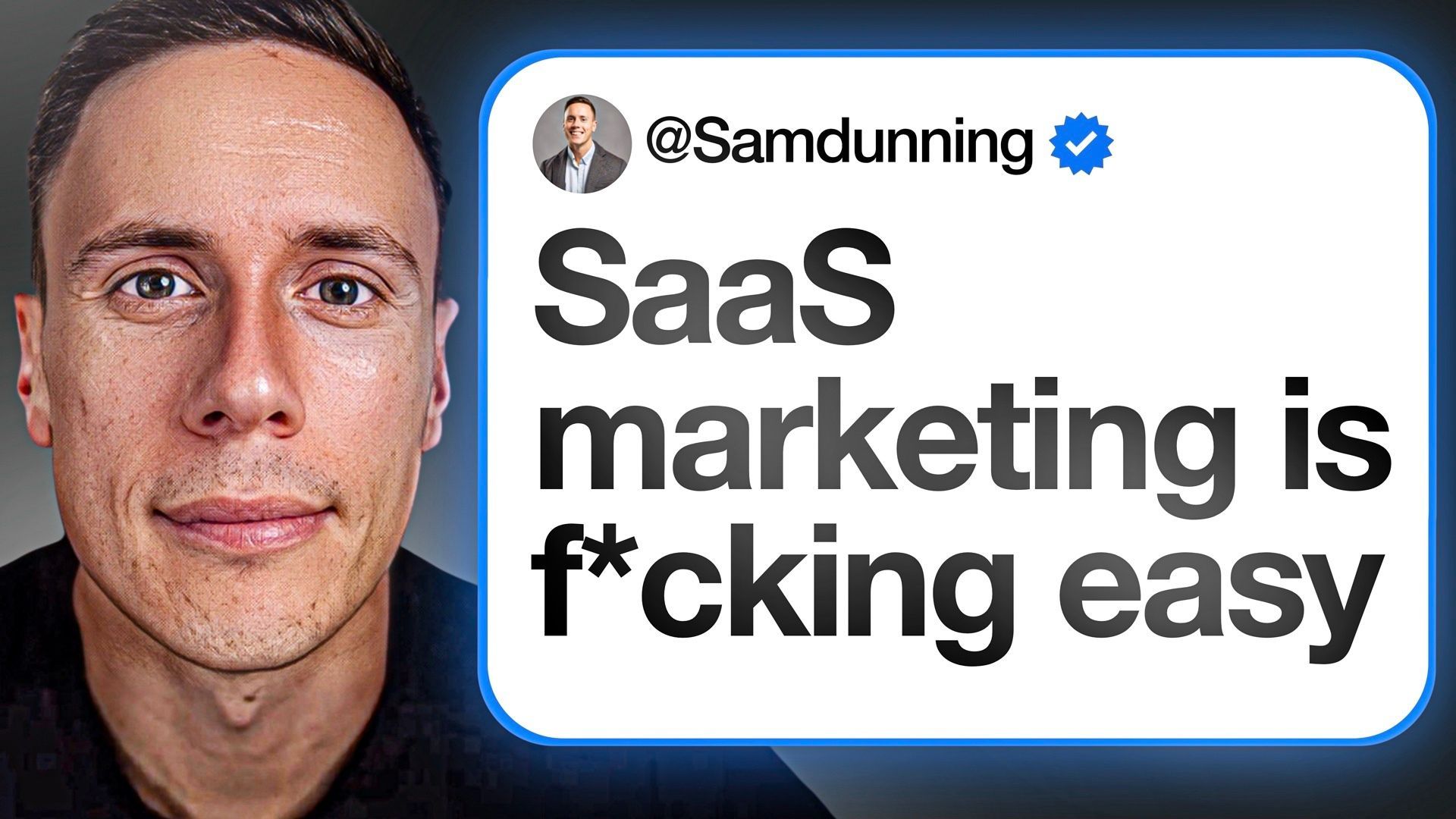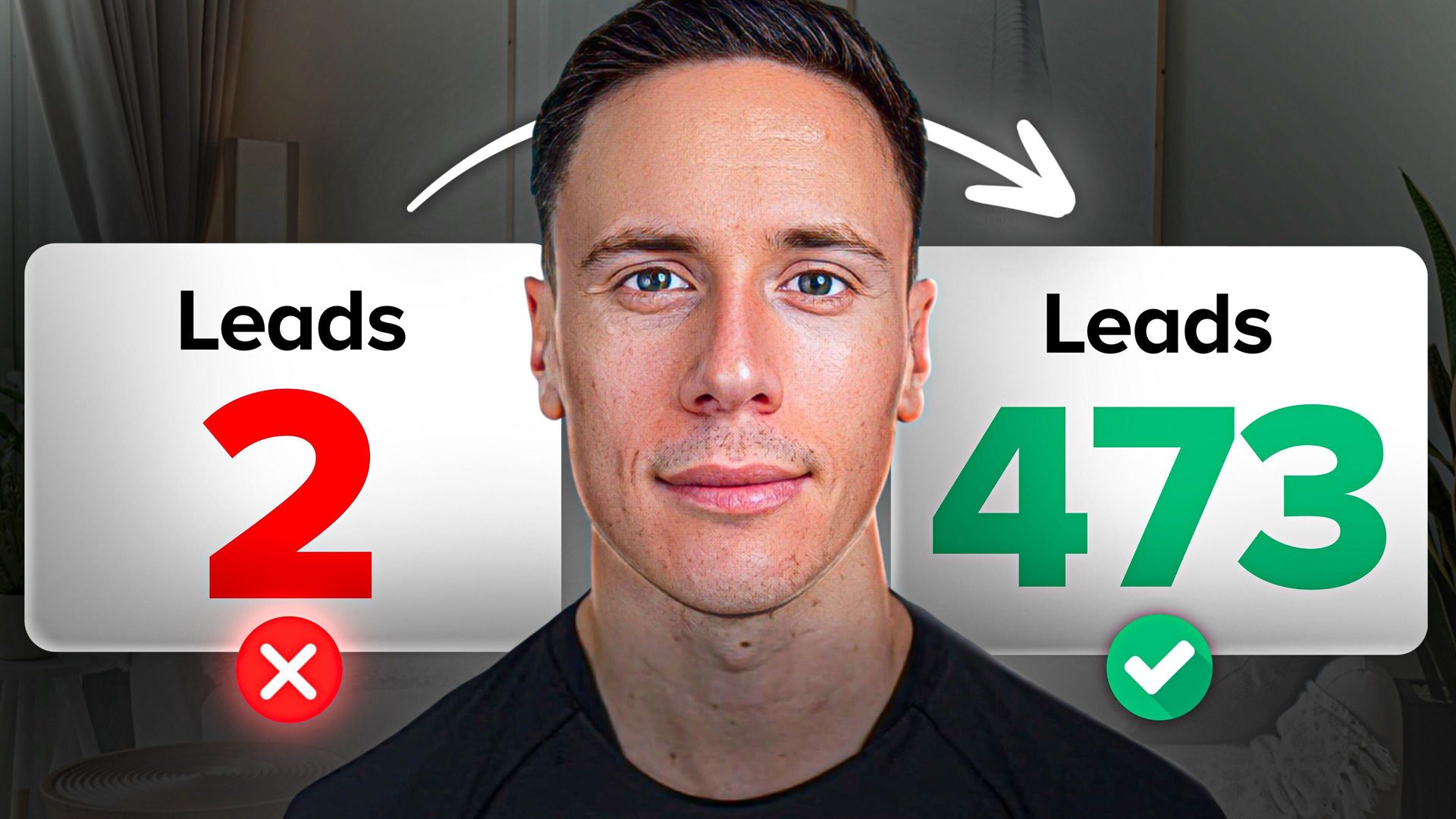Table of Contents
Ready To Grow Organic Pipeline & Revenue?
See if we can scale your organic pipeline from SEO as quick as 90 days.
Quick Summary
Struggling to Build Links for Your B2B Website?
Link building in B2B isn’t about volume, it’s about relevance, authority, and strategy. We’ve seen too many companies chase links that drive zero business impact.
At Breaking B2B, we focus on link building that supports bottom-funnel rankings and actual pipeline, not just DA scores or vanity traffic.
This guide covers how to build B2B backlinks that improve your SaaS SEO, strengthen topical authority, and attract qualified buyers, not bots or clickers.
But first…
Why Listen to Us?
At Breaking B2B, we’ve helped numerous B2B SaaS and service-based companies earn high-authority backlinks that drive real results, like ranking #1 for revenue-driving keywords in hyper-competitive niches. This experience gives us the insight to break down exactly how to build B2B links that actually move the needle.

What Is B2B Link Building?
B2B link building is the process of earning high-quality backlinks from other relevant websites to improve your search engine rankings and drive organic traffic. But in the B2B world, it’s not just about quantity, it’s about earning links from trusted, niche-specific sources that your ideal buyers actually pay attention to.
Unlike B2C link building, which often targets broad consumer sites,
B2B link building focuses on industry blogs, SaaS directories, partner websites, and thought leadership platforms.
Why Is B2B Link Building Important?
Earns Trust in Long Sales Cycles
In B2B, buyers research for weeks, credible backlinks from industry-relevant sites act as third-party validation that builds confidence before a sales conversation even starts.
Ranks High-Intent, Bottom-Funnel Pages
Links to blog posts are fine, but we focus on building links to pages that drive revenue: pricing, integrations, comparison pages, and features. These are the assets we help our clients create, optimize, and promote at Breaking B2B.
Builds Niche Authority, Not Just Traffic
Ranking for “[industry] software” means earning links from publishers and partners within your vertical. General directories or low-effort guest posts won’t cut it.
Supports Compounding Organic Growth
High-quality, contextually placed links compound over time, boosting rankings for entire topic clusters, not just the page being linked. At Breaking B2B, we focus on building this scalable authority system, not one-off wins.
Future-Proofs Your Rankings
B2B search results shift slowly, but when they do, the winners have strong, relevant link profiles. Our approach leans on quality, not volume, so your rankings are less vulnerable to algorithm changes.
How to Build B2B Backlinks That Strengthen SEO and Sales
Below, we break down the exact process we use at
Breaking B2B to build links that matter.
1. Set Clear SEO & Business Goals for Link Building
Before you send a single pitch, get specific about why you’re building links. Too many teams chase “more backlinks” without defining what success looks like, or how it connects to the pipeline.
Start by answering:
- What SEO goals are we supporting?
- Do you need to improve rankings for bottom-funnel pages like pricing, features, or comparison pages?
- Or do you want to boost your domain authority to lift an entire content cluster?
Then align with sales and marketing:
- Which pages drive qualified leads?
- What keywords signal high buying intent?
Your link-building targets should map directly to these revenue-driving assets, not just blog posts that bring in unqualified traffic.
Next, focus your efforts:
- Avoid spreading your outreach too thin.
- Prioritize a small group of high-converting URLs that need a ranking boost.
- This sharp focus helps guide smarter prospecting and outreach.
Finally, define success upfront:
- How many links per month?
- Minimum Domain Authority (DA)?
- Industry relevance or topical authority?
- Placement types (guest posts, resource links, etc.)?
Clear criteria keep your strategy grounded, and ensure you’re building links that move the needle for both SEO and sales.
2. Identify High-Intent, Link-Worthy Pages
Not every page deserves a backlink. In B2B, your goal is to strengthen the pages that drive conversion, not just traffic. That means focusing on assets built for buyers, not browsers.
Start with your highest-converting URLs. These are often pricing pages, solution overviews, integration details, or competitor comparison pages. They tend to rank for keywords tied to intent, like
- “[your product] vs [competitor]” or
- “[category] software for [industry].”
Next, review which pages are already ranking on page two for valuable terms. These “almost there” pages are perfect link targets, just a few strong backlinks can push them into high-visibility territory.
At Breaking B2B, we focus our link building efforts on bottom-funnel SEO pages for SaaS and B2B clients. These include:
- Solution or service pages that drive demos
- High-intent blog posts targeting comparison or problem-based queries
- Resource hubs designed to educate and convert
We did this for ClickHouse, a SaaS database tool, and they saw a 37% increase in total sign-ups.

Avoid wasting effort on pages that don’t map to revenue. Top-of-funnel blog posts can attract links, but they rarely convert without strong CTAs or follow-up paths.
Finally, check the content quality. Is the page genuinely link-worthy? Thin, outdated, or generic content won’t attract good links, even with great outreach. If needed, improve the page before launching any link campaign.
3. Research and Prioritize Link Targets by Relevance & Authority
Now that you’ve locked in your link-worthy pages, it’s time to find the right websites to earn backlinks from. But in B2B linkbuilding, not all links are created equal, relevance and authority are non-negotiable.
Start with relevance. Look for websites that speak to your audience. That means:
- Industry blogs
- SaaS review sites
- B2B media publishers
- Partner or integration blogs
A link from a niche B2B site with aligned content will outperform a high-DA generalist site every time.
Next, check authority but don’t get tunnel vision.
Use tools like Ahrefs or Moz to check DR/DA. But here’s the truth: A DR 40 site in your niche with real traffic and topical alignment is worth more than a DR 90 site with zero context. Context beats vanity metrics every time.
Then, focus on linkability. Target pages that naturally include outbound links:
- Resource roundups
- Listicles
- “Best tools” or comparison posts
- Articles that quote experts
These pages are already designed to link to you, so your pitch will convert faster.
As you build your list, categorize prospects by type:
- Guest posting opportunities
- Resource or content roundups
- Partners or customer blogs
- Journalists or newsletter curators
This targeting framework helps avoid wasted outreach and sets you up for contextual, scalable link acquisition. Always build with purpose, not just volume.
4. Develop Unique, Value-Driven Outreach Angles
If your outreach sounds like everyone else’s, it’s getting deleted. To earn high-quality B2B backlinks, your pitch needs to offer real value, and be tailored to each target’s audience and content style.
Start with research, not outreach: Before you send anything, review your target’s most recent content:
- What topics do they cover?
- Who is their audience?
- What tone and angle do they use?
This gives you the context you need to craft a pitch that fits their editorial goals, not something they’ll dismiss as spam.
Forget templates, offer value. Generic outreach doesn’t cut it. Build your pitch around collaboration and usefulness. Proven angles include:
- Offering a quote or expert insight to enhance an existing post
- Recommending your content as a relevant or updated resource
- Pitching a fresh, high-quality guest post with actionable value
- Sharing original data or research to support their claims
This isn’t about getting a link, it’s about improving their content. When publishers see you’re helping them serve their audience better, they trust you, and that’s how long-term link partnerships are built.
Always personalize.
Reference the author by name. Mention a specific article. Show that you’ve done your homework.
Cold emails that feel warm get responses. Every time.
If you’re doing outreach at scale, create a short “pitch angle bank” with tested value-add approaches. Document what worked across different industries or content types (e.g., stats replacement, broken link updates, original commentary). That way, even if you're personalizing each email, you're not starting from scratch every time.
Also consider segmenting your outreach targets. Editors, marketers, and content managers have different priorities, so your value prop should adapt. For example, offering fresh data may resonate with a blog editor, while a customer success manager might care more about thought leadership collaboration.
Track outreach performance over time by angle type and placement quality. Over time, you’ll spot patterns, certain styles or subject lines may earn more placements from SaaS blogs versus media sites. The goal isn’t just to personalize but to optimize personalization with feedback.
5. Use Existing Content to Earn Contextual Links
Before creating new assets, audit what you already have. Many SaaS companies sit on pages that are ripe for backlinks, they just haven’t been pitched strategically.
Start by identifying content with strong SEO potential but weak link profiles. These are often in-depth blog posts, data-driven guides, or detailed how-tos already ranking on page 2–3 for target keywords.
Next, map those pages to potential link angles. For example:
- A “how-to” article can support educational posts on similar topics.
- A benchmark report or data study can enhance stats-driven content.
- A case study can validate points in opinion pieces or industry trends.
Then, pitch your content as a value add. Focus on how linking to your resource strengthens their article, this shifts the pitch from self-serving to collaborative.
Avoid forcing links where they don’t fit. Editors spot this instantly. Relevance is key: a contextual link in a well-aligned article outperforms a sidebar mention on an unrelated page every time.
6. Create Linkable Assets That Attract Organic Backlinks
While outreach is essential, the most scalable backlinks come from content that earns links passively. That’s where linkable assets come in, pages specifically designed to attract organic backlinks over time.
Start by identifying content formats that naturally earn links in B2B:
- Original research or proprietary data
- Industry benchmarks or annual reports
- Templates, calculators, or frameworks
- Expert roundups or curated resources
- Definitive guides or high-quality explainer content
These assets provide value that other sites want to cite, reference, or include in roundups. But they must be built with depth, clarity, and credibility. Thin content won't attract links, regardless of the format.
At Breaking B2B, we build linkable assets that serve two purposes: strengthen topical authority and support bottom-funnel rankings. For example, a detailed comparison guide may be used in outreach, but also cited organically as the best explanation on the topic, as confirmed by the feedback we consistently receive in client testimonials.

Promotion matters just as much as creation. Once your asset is live, promote it through:
- Targeted outreach to blogs or newsletters in your niche
- Internal linking from high-traffic pages
- Repurposing into quotes, graphics, or data snippets for broader use
Don’t rely on chance. Seed your content into the right places to give it visibility. Great content without reach is invisible.
Finally, refresh these assets regularly. A “2023 Benchmark Report” stops earning links when it’s outdated. Keep them current and resurface them through outreach and social promotion.
Linkable assets are long-term link magnets, but only if they’re intentional, promoted, and maintained. Build them to serve your audience and your authority.
Before creating a new linkable asset, analyze what’s already working in your niche using tools like Ahrefs' Content Explorer or Semrush’s Link Building Tool. Look for:
- Types of assets earning links
- Common formats, length, and structure
- Use of visuals or embedded media
- Keyword targeting strategies
Reverse-engineering top performers gives you a proven head start.
Combine formats to increase link-worthiness. For example:
- Embed a downloadable calculator within a comparison guide
- Turn survey data into both a report and an interactive chart
This layered value gives others more reasons to link to your content.
Don’t overlook internal linking. The best linkable assets not only attract backlinks but also:
- Pass authority to bottom-funnel pages
- Strengthen your overall site architecture
- Help more than just one page rank
Build assets that deliver value in multiple directions, for users, search engines, and your pipeline.
7. Leverage Strategic Partnerships and Industry Relationships
Your existing network is one of the most underused link building assets. Partners, customers, and industry peers often have relevant, high-authority websites, and a clear reason to link to you.
Start by auditing your ecosystem:
- Technology partners
- Integration collaborators
- Agencies or consultants you work with
- Customers who have blogs or resource centers
- Podcasts, webinars, or events you've contributed to
Look for natural content intersections, like joint use cases, co-branded content, or guest contribution opportunities. A shared success story or technical integration page is often an ideal backlink source.
Don’t lead with “Can you link to us?” Instead, propose a win-win. For example: “We’re building a joint case study and would love to feature your team, interested?" That approach builds long-term value, not transactional relationships.
At the B2B level, trust matters more than scale. We help clients identify and activate these relationship-driven opportunities, where links are a byproduct of real collaboration, not cold outreach.
8. Track Results and Double Down on What Works
Link building without measurement is just guesswork. Once links go live, monitor their impact on both SEO and pipeline. Use tools like Ahrefs or Google Search Console to track improvements in keyword rankings, referring domains, and organic traffic to targeted pages.
More importantly, connect link building to business metrics. Are the pages you supported driving more demo requests or qualified leads? If not, reassess the pages, not just the links.
Identify which outreach angles, content formats, and link sources deliver the strongest results, then scale
those.
Don’t reinvent your process every month.
Effective B2B link building is iterative. Track what works, refine your strategy, and repeat. The real gains come from consistent execution, not chasing every shiny new tactic.
Track more than just link volume. Build a dashboard that shows:
- Domain Authority (DA/DR)
- Industry relevance
- Funnel stage of the linked page
- Link source: earned through outreach or passively gained
This gives you clear visibility into the quality and impact of your backlinks over time.
When a page ranks better or demo conversions spike, audit the backlinks that triggered the change:
- Were they from niche directories?
- Guest post placements?
- Industry newsletters?
Double down on what moved the needle. Use these insights to shape your next campaign.
Review your link-building campaigns quarterly. Pages that once ranked well may now need:
- Fresh links to stay competitive
- Content updates to keep attracting organic links
Bottom line: Link building is ongoing. The smarter your tracking, the more powerful your next sprint.
Build Links That Fuel Rankings and Revenue with Breaking B2B
B2B link building isn’t about chasing metrics, it’s about earning authority where it counts. When done right, it strengthens your SEO, elevates key pages, and supports real pipeline growth. That’s exactly how we approach it at Breaking B2B.
We help B2B SaaS and service companies earn high-impact backlinks through focused SEO strategies, bottom-funnel content, and scalable link systems. No fluff, just links that move the needle.
Book a call with Breaking B2B to build a link strategy that drives qualified traffic and conversions.







